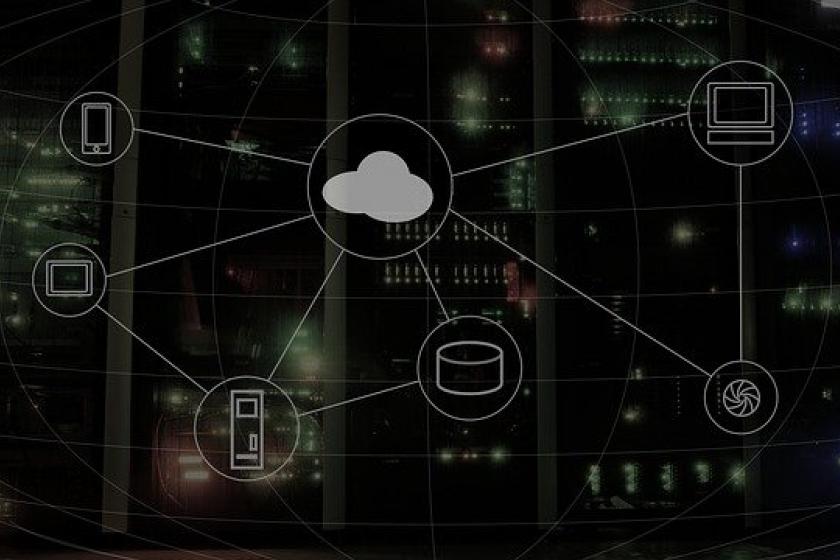How to Plan for a Data Center Migration
By migrating from a traditional data center environment to a cloud environment, teams will be able to more easily optimize their workloads using the tools that cloud platforms provide.
November 22, 2021

While there are potential challenges associated with data center migration, the benefits of moving from physical infrastructures, enterprise data centers, or on-premises data storage systems to a cloud data center or a hybrid cloud system are well worth the effort.
Now that we’ve gone over the potential challenges of data center migration, how do businesses enable a successful data center migration while effectively managing risk?
Below, we've laid out a repeatable high-level migration strategy that is broken down into four phases: Discovery, Planning, Execution, and Optimization. By leveraging a repeatable framework as such, organizations create the opportunity to identify assets, minimize migration costs and risks using a multi-phased migration approach, enable deployment and configuration, and finally, optimize the end state.
See also: Data Center Migration to the Cloud: Why Your Business Should Do It Now
Phase 1: Discovery
During the Discovery phase, companies should understand and document the entire data center footprint. This means understanding the existing hardware mapping, software applications, storage layers (databases, file shares), operating systems, networking configurations, security requirements, models of operation (release cadence, how to deploy, escalation management, system maintenance, patching, virtualization, etc.), licensing and compliance requirements, as well as other relevant assets.
The objective of this phase is to have a detailed view of all relevant assets and resources of the current data center footprint.
The key milestones in the Discovery phase are:
Creating a shared data center inventory footprint: Every team and individual who is a part of the data center migration to the cloud should be aware of the assets and resources that will go live.
Sketching out an initial cloud platform foundations design: This involves identifying centralized concepts of the cloud platform organization such as folder structure, Identity and Access Management (IAM) model, network administration model, and more.
As a best practice, companies should engage in cross-functional dialogue within their organizations, including teams from IT to Finance to Program Management, ensuring everyone is aligned on changes to support future cloud processes. Furthermore, once a business has migrated from a physical data center to the cloud, they should consider whether their data center team is trained to support the systems and infrastructure of the cloud provider.
Phase 2: Planning
When a company is entering the Planning phase, they are leveraging the assets and deliverables gathered in the Discovery phase to create migration waves to be sequentially deployed into non-production and production environments.
Typically, it is best to target non-production migration waves first, which helps identify the sequence of waves to migrate first. To start, consider the following:
Mapping the current server inventory to the cloud platform’s machine types: Each current workload will generally run on a virtual machine type with similar computing power, memory, and disk. Oftentimes though, the current workload is overprovisioned, so each workload should be evaluated to ensure that it is migrated onto the right VM for that given workload.
Timelines: Businesses should lay out their target dates for each migration project.
Workloads in each grouping: Figure out what migration waves are grouped by, i.e., non-production vs. production applications.
The cadence of code releases: Factor in any upcoming code releases as this may impact the decision of whether to migrate sooner or later.
Time for infrastructure deployment and testing: Allocate adequate time for testing infrastructures before fully moving over to the cloud.
The number of application dependencies: Migration order should be influenced by the number of application dependencies. The applications with the fewest dependencies are generally good candidates for migration first. In contrast, wait to migrate an application that depends on multiple databases.
Migration complexity and risk: Migration order should also take complexity into consideration. Tackling simpler aspects of the migration first will generally yield a more successful migration.
As mentioned above, the best practice for migration waves is to start with more predictable and simple workloads. For instance, companies should start with migrating file shares first, then databases and domain controlled, and save the apps for last. However, sometimes the complexity and dependencies don’t allow for a straightforward migration. In these cases, utilizing an experienced service provider who has experience with these complex environments will be prudent.
Phase 3: Execution
Once companies have developed a plan, they can bring them to fruition in the Execution phase. Here, businesses will need to be deliberate about the steps they take and the configurations they develop.
In the Execution phase, companies will put into place infrastructure components and ensure they are configured appropriately, like IAM, networking, firewall rules, and Service Accounts. Here is also where teams should test the applications on the infrastructure configurations to ensure that they have access to their databases, file shares, web servers, load balancers, Active Directory servers, and more. Execution also includes using logging and monitoring to ensure applications continue to function with the necessary performance.
In order for the Execution phase to be successful, there needs to be agile application debugging and testing. Moreover, organizations should have both a short and long-term plan for resolving blockers that may come up during the migration. The Execution phase is iterative, and the goal should be to ensure that applications are fully tested on the new infrastructure.
Phase 4: Optimization
The last phase of a data center migration project is Optimization. After a business has migrated its workloads to the cloud, it should conduct periodic reviews and planning to optimize the workloads. Optimization includes the following activities:
Resizing machine types and disks
Leveraging software like Terraform for more agile and predictable deployments
Improving automation to reduce operational overhead
Bolstering integration with logging, monitoring, and alerting tools
Adopting managed services to reduce operational overhead
Cloud services provide visibility into resource consumption and spend, and organizations can more easily identify the compute resources they are paying for. Additionally, businesses can identify virtual machines they need or don’t need. By migrating from a traditional data center environment to a cloud environment, teams will be able to more easily optimize their workloads using the powerful tools that cloud platforms provide.
Joey Yore is a Manager, Principal Consultants at 2nd Watch.
Read more about:
Data center modernizationAbout the Author(s)
You May Also Like





